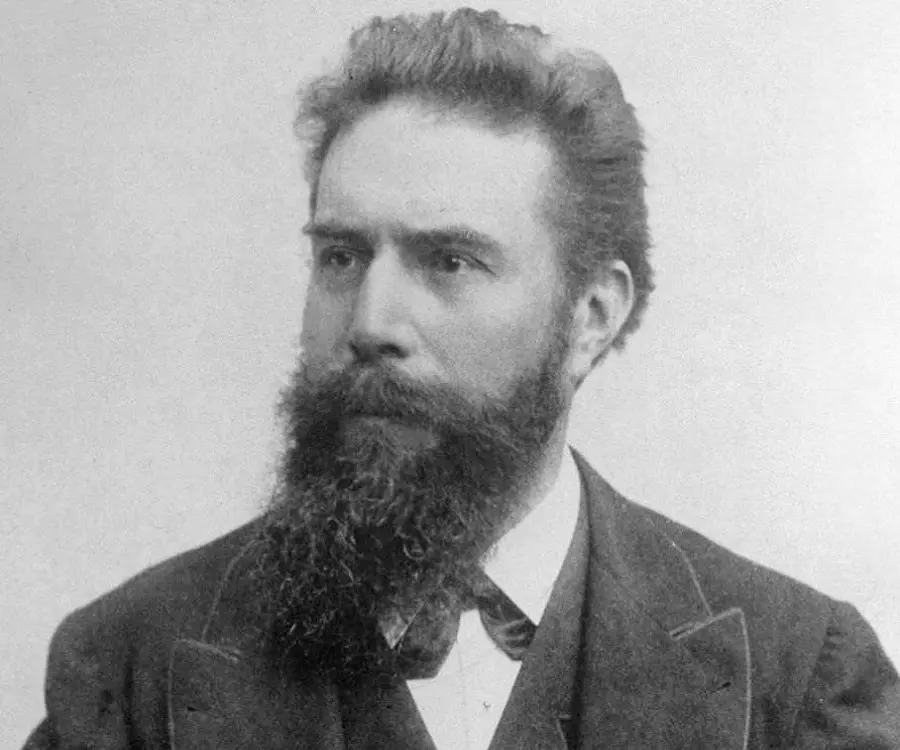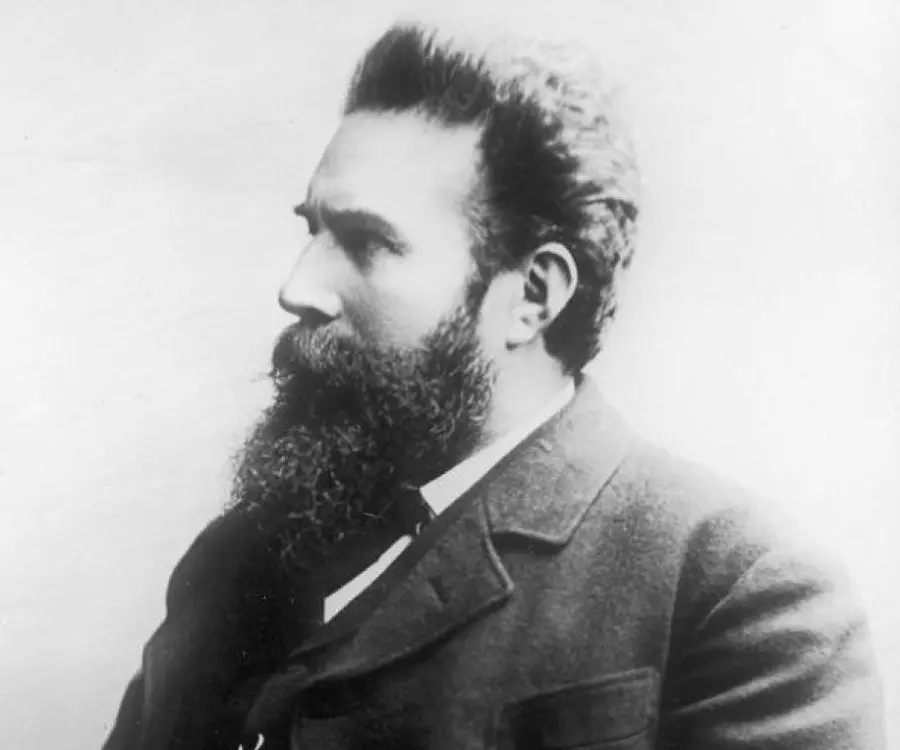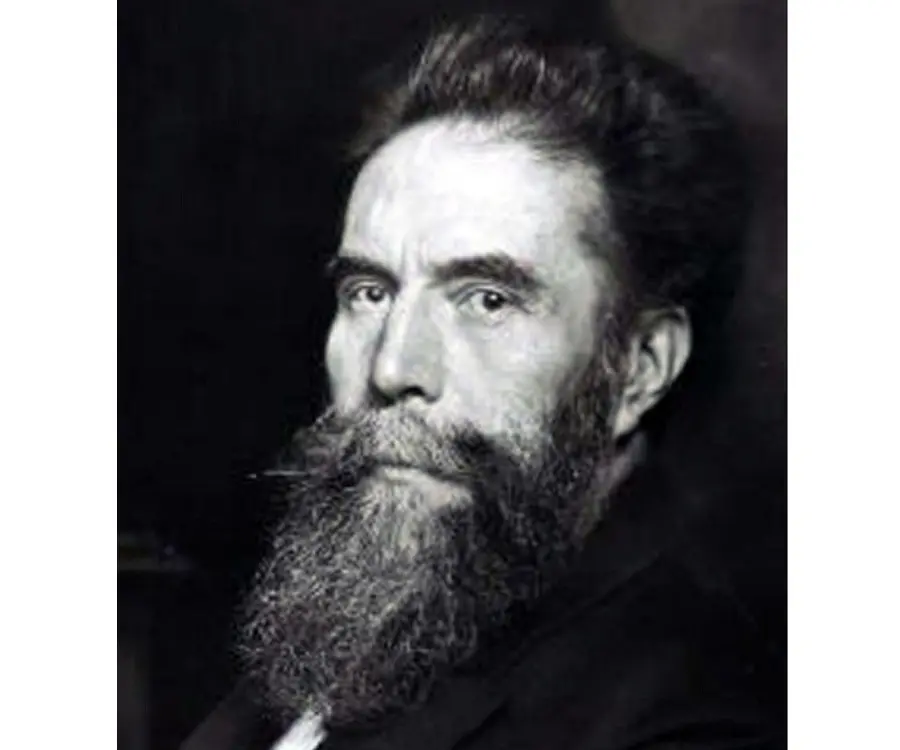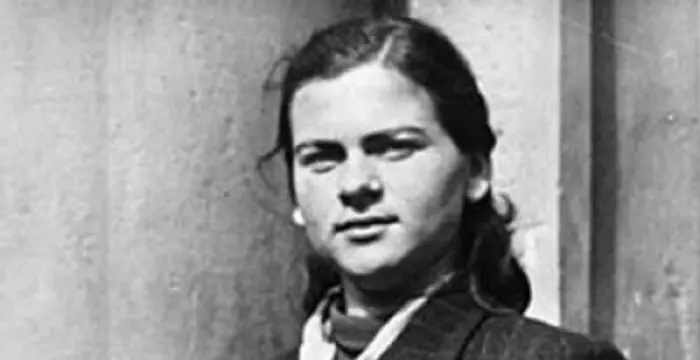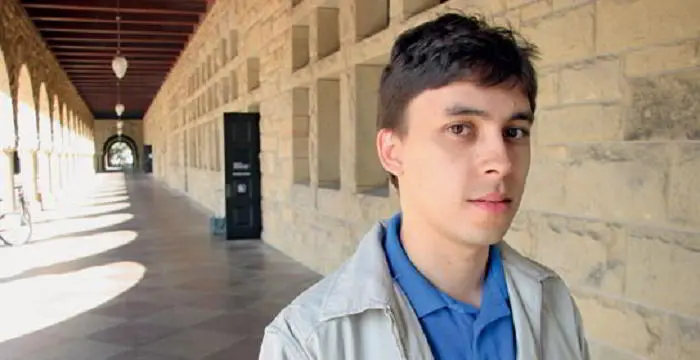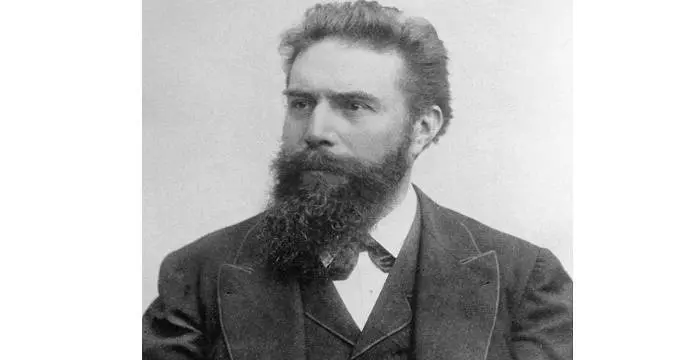
Wilhelm Rontgen - Winner of First Nobel Prize in Physics, Family and Facts
Wilhelm Rontgen's Personal Details
Wilhelm Rontgen was an eminent German physicist who won the first Nobel Prize in Physics, for the discovery of X-rays
| Information | Detail |
|---|---|
| Birthday | March 27, 1845 |
| Died on | February 10, 1923 |
| Nationality | German |
| Famous | Scientists, Physicists, Winner of First Nobel Prize in Physics |
| Spouses | Anna Bertha Ludwig |
| Known as | Wilhelm Conrad Röntgen |
| Childrens | Josephine Bertha Ludwig |
| Universities |
|
| Discoveries / Inventions |
|
| Birth Place | Lennep, Rhine Province, Germany |
| Gender | Male |
| Sun Sign | Aries |
| Born in | Lennep, Rhine Province, Germany |
| Famous as | Winner of First Nobel Prize in Physics |
| Died at Age | 77 |
Wilhelm Rontgen's photo
Who is Wilhelm Rontgen?
Wilhelm Rontgen was an eminent German physicist who won the first Nobel Prize in Physics, for the discovery of X-rays. Though many scientists had detected the X-rays even before Rontgen, he was the first person who discovered and systematically studied the X-rays. Born into a family of cloth merchants, he was neither brilliant nor an attentive student in his childhood; rather he was keenly interested in nature during his younger years. After being expelled from the school, he became an irregular student and it was only after he came under the guidance of Professor Kundt, he discovered his defining passion and true talent. He served as a professor of physics at many universities before discovering the Rontgen rays which later became known as “X-rays”. Apart from it, he also conducted researches in various other branches of physics including elasticity, capillarity, conduction of heat in crystals, the absorption of heat-rays by different gases, piezoelectricity and the electromagnetic rotation of polarized light. A multifaceted genius, his greatest gift to mankind is considered to be the discovery of the X-rays which also earned him the first ever ‘Nobel Prize in Physics’. Through his discovery, he revolutionized the entire medical profession and set the foundation for diagnostic radiology. Today, he is considered the father of diagnostic radiology, the medical field which uses imaging to diagnose disease.
// Famous Scientists
Juliane Koepcke
Juliane Koepcke is a German-Peruvian biologist, who was the lone survivor among the 92 passengers and crew of the ill-fated LANSA Flight 508 that crashed in the Peruvian rainforest on 24 December 1971. Know more about her life in this biography.
Henry Cavendish
Henry Cavendish was a theoretical chemist and physicist, renowned for discovery of hydrogen and calculation of the mass of earth. To know more about his childhood, profile, timeline and career read on
Konstantin Tsiolkovsky
Konstantin Tsiolkovsky was a Russian rocket scientist and a pioneer of astronautics. This biography provides detailed information about his childhood, family, personal life, career, achievements, etc.
Childhood & Early Life
He was born on March 27, 1845, in Lennep, Germany to Friedrich Conrad Roentgen, a textile merchant and his wife, Charlotte Constanze Frowein. He was their only child.
He received his primary and secondary education in the public schools of Apeldoorn and at a private boarding school in Middelann.
In 1862, he was enrolled at the Utrecht Technical School but was expelled after some time on account of a childish mischief which involved drawing a caricature of an unpopular teacher of the school.
In 1865, he was authorized to attend the University of Utrecht but as an irregular student. Despite the fact that he took classes on various subjects including analysis, physics and chemistry, he did not seem to focus towards becoming a regular student.
When it came to his knowledge that he could be admitted to the Federal Polytechnic Institute in Zurich, he instantly applied for it and passed its examinations. Thus, he began studying mechanical engineering and received his diploma in 1868.
After graduating, he attended the University of Zurich and obtained his Ph.D. in physics in 1869. In the university, he became a favorite student of Professor August Kundt.
Career
After completing his doctoral degree, he was asked by Kundt to be his assistant and he accepted the post. Next year, he traveled with Kundt to the University of Wurzburg and afterwards to the University of Strassburg where Kundt served as a lecturer.
In 1874, he received his first official academic appointment when he became a privatdozent at the University of Strassburg. Next year, he was appointed a professor of physics at the Hohenheim Agricultural Academy.
In 1876, he returned to the University of Strassburg as an associate professor of physics. In 1879, he was appointed to the chair of physics at the University of Giessen, a post he served until 1888. In 1888, he returned to the University of Wurzburg to take a joint appointment as professor of physics. He made the discovery of the Roentgen rays during his professorship at the Wurzburg University. He published a total of three papers on X-rays between 1895 and 1897.
In 1900, he was appointed at the physics chair at the University of Munich, by the special request of the Bavarian government. He served in Munich for the rest of his career until his retirement in 1920.
Major Works
His most significant work is, undoubtedly, the discovery of X-rays, a form of electromagnetic radiations which are emitted when matter is bombarded with fast electrons. While conducting an experiment on cathode rays, electric current was passed through gases at extremely low pressure through a well-covered discharge tube, and he observed an illumination of barium platinocyanide covered screen, placed near the apparatus. He also discovered that the rays were capable of exposing a photographic plate and through this knowledge, he developed the image of his wife's hand and analyzed the variable transparency as showed by her bones, flesh and her wedding ring. Subsequently, he named it ‘X-rays’ and stated that they are produced by the impact of cathode rays on material objects.
Awards & Achievements
In 1896, he was awarded the Rumford Medal and Matteucci Medal along with Philipp Lenard. They received it for their investigations of the phenomena produced outside a highly exhausted tube through which an electrical discharge was taking place.
In 1897, he received the ‘Elliott Cresson Medal’ for his discovery of X-rays.
In 1900, he was honored with the ‘Barnard Medal’ of Columbia University.
In 1901, he became the first person to be awarded the Nobel Prize in Physics in recognition of the extraordinary services he rendered by the discovery of the remarkable rays, subsequently named after him, Roentgen rays or X-rays.
In 1919, he became the recipient of prestigious ‘Helmholtz Medal’.
In 2004, IUPAC named element number 111 ‘Roentgenium (Rg)’ in his honor.
Personal Life & Legacy
In 1872, he married Anna Bertha Ludwig, whom he met in Zurich; she was the daughter of a German revolutionary who had emigrated to Switzerland. They had no children of their own. In 1887, they adopted Anna’s six-year old niece, Josephine Bertha Ludwig.
He died on February 10, 1923 in Munich, Germany due to carcinoma of the intestine. His remains were buried in Alter Friedhof, Giessen, Germany. In keeping with his will, all his personal and scientific correspondence was destroyed upon his death.
// Famous Physicists
Henry Cavendish
Henry Cavendish was a theoretical chemist and physicist, renowned for discovery of hydrogen and calculation of the mass of earth. To know more about his childhood, profile, timeline and career read on
Walter Kohn
Nobel Laureate Walter Kohn was an Austrian-born American theoretical chemist and physicist. Check out this biography to know about his childhood, life, achievements, works & timeline.
Nikola Tesla
Nikola Tesla was a Serbian-American inventor, best known for his development of alternating current electrical systems. This biography of Nikola Tesla provides detailed information about his childhood, life, achievements, works & timeline.
Wilhelm Rontgen's awards
| Year | Name | Award |
|---|---|---|
Other | ||
| 0 | 1901 - Nobel Prize in Physics | |
| 0 | 1897 - Elliott Cresson Medal | |
| 0 | 1896 - Matteucci Medal | |
| 0 | 1896 - Rumford Medal | |
Wilhelm Rontgen biography timelines
- // 27th Mar 1845He was born on March 27, 1845, in Lennep, Germany to Friedrich Conrad Roentgen, a textile merchant and his wife, Charlotte Constanze Frowein. He was their only child.
- // 1862In 1862, he was enrolled at the Utrecht Technical School but was expelled after some time on account of a childish mischief which involved drawing a caricature of an unpopular teacher of the school.
- // 1865In 1865, he was authorized to attend the University of Utrecht but as an irregular student. Despite the fact that he took classes on various subjects including analysis, physics and chemistry, he did not seem to focus towards becoming a regular student.
- // 1868When it came to his knowledge that he could be admitted to the Federal Polytechnic Institute in Zurich, he instantly applied for it and passed its examinations. Thus, he began studying mechanical engineering and received his diploma in 1868.
- // 1869After graduating, he attended the University of Zurich and obtained his Ph.D. in physics in 1869. In the university, he became a favorite student of Professor August Kundt.
- // 1872In 1872, he married Anna Bertha Ludwig, whom he met in Zurich; she was the daughter of a German revolutionary who had emigrated to Switzerland. They had no children of their own. In 1887, they adopted Anna’s six-year old niece, Josephine Bertha Ludwig.
- // 1874In 1874, he received his first official academic appointment when he became a privatdozent at the University of Strassburg. Next year, he was appointed a professor of physics at the Hohenheim Agricultural Academy.
- // 1879 To 1888In 1876, he returned to the University of Strassburg as an associate professor of physics. In 1879, he was appointed to the chair of physics at the University of Giessen, a post he served until 1888. In 1888, he returned to the University of Wurzburg to take a joint appointment as professor of physics. He made the discovery of the Roentgen rays during his professorship at the Wurzburg University. He published a total of three papers on X-rays between 1895 and 1897.
- // 1896In 1896, he was awarded the Rumford Medal and Matteucci Medal along with Philipp Lenard. They received it for their investigations of the phenomena produced outside a highly exhausted tube through which an electrical discharge was taking place.
- // 1897In 1897, he received the ‘Elliott Cresson Medal’ for his discovery of X-rays.
- // 1900 To 1920In 1900, he was appointed at the physics chair at the University of Munich, by the special request of the Bavarian government. He served in Munich for the rest of his career until his retirement in 1920.
- // 1900In 1900, he was honored with the ‘Barnard Medal’ of Columbia University.
- // 1901In 1901, he became the first person to be awarded the Nobel Prize in Physics in recognition of the extraordinary services he rendered by the discovery of the remarkable rays, subsequently named after him, Roentgen rays or X-rays.
- // 1919In 1919, he became the recipient of prestigious ‘Helmholtz Medal’.
- // 10th Feb 1923He died on February 10, 1923 in Munich, Germany due to carcinoma of the intestine. His remains were buried in Alter Friedhof, Giessen, Germany. In keeping with his will, all his personal and scientific correspondence was destroyed upon his death.
- // 2004In 2004, IUPAC named element number 111 ‘Roentgenium (Rg)’ in his honor.
// Famous German peoples
Jordan Carver
Jordan Carver is a famous German model. Let’s take a close look at her personal life, including her age, career, net worth, achievements and some fun facts.
Jürgen Klopp
Jürgen Klopp is a German football manager, and a former professional football player. Check out this biography to know more about his childhood, family, personal life, etc.
Irma Grese
Irma Grese was a notorious German Nazi concentration camp guard during the Second World War. This biography profiles her childhood, life, horrifying acts, death and other facts.
Juliane Koepcke
Juliane Koepcke is a German-Peruvian biologist, who was the lone survivor among the 92 passengers and crew of the ill-fated LANSA Flight 508 that crashed in the Peruvian rainforest on 24 December 1971. Know more about her life in this biography.
Jawed Karim
Jawed Karim is a German-American internet entrepreneur, technologist and co-founder of the video-sharing website, YouTube. Check out this biography to know about his childhood, family, personal life, achievements, age, etc.
Charles Bukowski
Charles Bukowski was a German-born American novelist, short story writer and poet. With this biography, learn in details about his childhood, life, works, career and timeline
Wilhelm Rontgen's FAQ
What is Wilhelm Rontgen birthday?
Wilhelm Rontgen was born at 1845-03-27
When was Wilhelm Rontgen died?
Wilhelm Rontgen was died at 1923-02-10
Where was Wilhelm Rontgen died?
Wilhelm Rontgen was died in Munich, Germany
Which age was Wilhelm Rontgen died?
Wilhelm Rontgen was died at age 77
Where is Wilhelm Rontgen's birth place?
Wilhelm Rontgen was born in Lennep, Rhine Province, Germany
What is Wilhelm Rontgen nationalities?
Wilhelm Rontgen's nationalities is German
Who is Wilhelm Rontgen spouses?
Wilhelm Rontgen's spouses is Anna Bertha Ludwig
Who is Wilhelm Rontgen childrens?
Wilhelm Rontgen's childrens is Josephine Bertha Ludwig
What was Wilhelm Rontgen universities?
Wilhelm Rontgen studied at University of Zurich (1869), Institute of Martinus Herman van Doorn, ETH Zurich
What is Wilhelm Rontgen's inventions/discoveries?
Discovered X-Rays was invented (or discovered) by Wilhelm Rontgen
What is Wilhelm Rontgen's sun sign?
Wilhelm Rontgen is Aries
How famous is Wilhelm Rontgen?
Wilhelm Rontgen is famouse as Winner of First Nobel Prize in Physics
